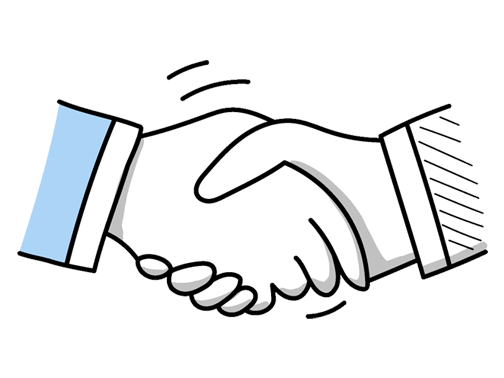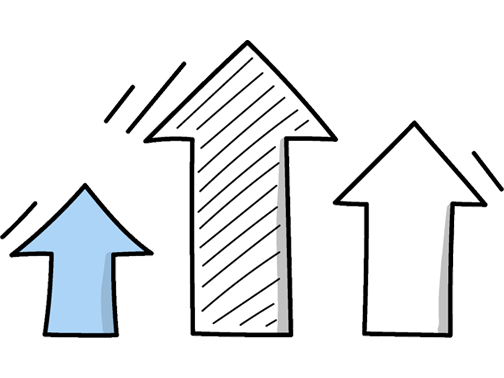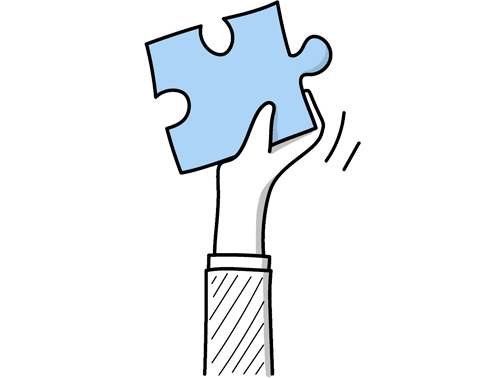Customer Support Manager Interview Questions (2025 Guide)
Find out common Customer Support Manager questions, how to answer, and tips for your next job interview
Practice Interviews Online - Identify your strengths and weakness in a realistic Customer Support Manager mock interview, under 10 minutes
Practice Now »Customer Support Manager Interview Questions
Questions like this assess your ability to systematically collect, analyze, and apply customer feedback to enhance service quality. You should explain the methods you use to gather feedback, how you identify key issues from it, and give an example of a change you implemented that improved customer satisfaction.
Example: I usually collect feedback through surveys, direct conversations, and social media monitoring to get a real sense of customer experiences. Then, I look for common themes or issues that pop up, which helps pinpoint areas for improvement. For example, after noticing delays in response times from feedback, we adjusted our staffing, which noticeably boosted satisfaction scores. Keeping an ongoing dialogue ensures services evolve based on what customers truly need.
What they want to understand is how you handle conflict and use problem-solving skills to improve customer experience. You need to describe a specific situation, explain the actions you took to address the customer's concerns, and highlight the positive outcome you achieved.
Example: Certainly. In a previous role, a customer was upset about a delayed order. I listened carefully, acknowledged their frustration, and took immediate ownership. I coordinated with the shipping team to prioritise their delivery and kept the customer updated throughout. By showing genuine concern and clear communication, the customer felt valued and their trust was restored, turning their experience around positively.
Employers ask this question to see how you handle unexpected challenges and maintain productivity during change. In your answer, clearly describe the situation, the steps you took to adapt, and the positive results or lessons learned from that experience.
Example: At my previous role, our company shifted to a new CRM system unexpectedly. I took the lead in learning the platform quickly and organised team training sessions to ease the transition. By staying calm and proactive, we maintained service levels without disruption. This experience taught me the value of flexibility and clear communication during change.
Questions like this assess your leadership style and ability to inspire your team toward shared goals. You should explain how you set clear expectations, provide support and recognition, and foster a positive environment to keep your team motivated.
Example: I believe motivation comes from understanding each team member’s strengths and goals. I encourage open communication, celebrate small wins, and provide support when challenges arise. For example, in my last role, we held regular check-ins to track progress and shared positive feedback, which boosted morale and helped the team consistently meet targets. Creating a positive, collaborative environment makes all the difference.
Questions like this assess your ability to lead change effectively and ensure smooth adoption of new tools. You should explain how you’d plan by assessing team needs, communicate and train your team clearly, and monitor progress through feedback and usage metrics.
Example: When introducing a new CRM, I’d start by mapping out each phase clearly, ensuring everyone knows their role. Keeping the team involved through regular check-ins and tailored training helps ease the transition. I’d track how the system is adopted daily, gathering feedback to spot any issues early. For example, in my last role, quick adjustments based on team input improved our efficiency within weeks.
This interview question assesses your commitment to continuous learning and your ability to leverage new technologies to enhance customer support. You need to say that you regularly follow industry news, use current CRM tools, and apply new trends to improve customer service efficiency and quality.
Example: I make it a point to regularly read industry blogs and engage with professional forums to catch up on new tools like AI chatbots or CRM upgrades. Attending webinars and networking with peers helps me see how others tackle challenges. When I spot a trend that could enhance our customer experience, I discuss it with the team and explore practical ways to integrate it smoothly into our workflows.
Questions like this assess your teamwork and leadership skills in achieving shared objectives. You need to explain the goal, your specific role, and how you collaborated to succeed.
Example: In my previous role, we faced a sudden spike in customer queries during a product launch. As the team lead, I coordinated between support agents and technical staff to streamline responses and update FAQs quickly. By encouraging regular check-ins and sharing feedback, we reduced response times significantly and maintained customer satisfaction throughout a challenging period. It was rewarding to see how collaboration kept everything on track.
Questions like this assess your ability to communicate company vision and maintain team cohesion. You need to explain how you regularly share goals, model values, and encourage open dialogue to keep everyone aligned.
Example: I keep the team connected to our company’s mission through regular, open conversations about how their work impacts our broader goals. I encourage sharing successes and challenges, which helps reinforce values in real situations. For example, during team meetings, we discuss real customer stories that highlight how our support aligns with company standards, making the goals feel personal and relevant every day.
Hiring managers ask this question to see how you approach complicated challenges and work across teams to find solutions. In your answer, clearly describe the problem’s context and complexity, explain the systematic steps you took to resolve it, and share the positive results and lessons learned.
Example: In a previous role, we faced a sudden spike in customer complaints due to a software update that caused delays. I brought the team together to quickly identify the root cause, coordinated with IT to implement a fix, and communicated transparently with customers throughout. This not only resolved the issue swiftly but also strengthened our team's problem-solving approach and improved customer trust moving forward.
This question assesses your ability to train and manage your team for optimal software use, which directly impacts customer satisfaction and efficiency. You need to say that you provide regular training, monitor usage, and encourage feedback to continuously improve their proficiency.
Example: I focus on regular training and open communication to make sure everyone’s confident with the tools. For example, we schedule short refreshers whenever new features roll out and encourage team members to share tips during meetings. It’s about creating a space where questions are welcomed, so the software becomes a real asset rather than a hurdle in daily work.
What they want to understand is how you handle ambiguity and use critical thinking to find effective solutions. You need to explain that you gather information, consider multiple perspectives, and test possible options before deciding on the best approach.
Example: When faced with unclear problems, I start by gathering insights from the team and customers to understand different perspectives. Then, I break the issue down into smaller parts and explore possible solutions step-by-step. For example, when a new service glitch arose, we tested fixes iteratively while keeping communication open, which helped us find a reliable solution together. Flexibility and collaboration are key in these situations.
Questions like this assess your ability to remain calm and problem-solve under pressure while maintaining customer satisfaction. You need to briefly describe the situation, how you addressed the customer’s concerns with empathy and clear communication, and the positive result you achieved.
Example: Certainly. In a previous role, a customer was upset over a delayed order. I listened carefully, acknowledged their frustration, and quickly coordinated with the logistics team to provide a clear update. By keeping them informed and offering a small goodwill gesture, we turned the situation around. The customer appreciated the transparency and remained loyal, demonstrating how empathy and clear communication can resolve tense moments effectively.
Hiring managers ask this question to see how you manage time and resources under pressure, ensuring urgent and important customer issues are resolved efficiently. You need to say that you assess the urgency and impact of each issue, then prioritize tasks accordingly while communicating clearly with your team and customers.
Example: When handling several customer issues simultaneously, I focus first on urgency and impact—like addressing a service outage before routine queries. I stay organised by quickly assessing each case, setting clear priorities, and communicating expected response times. For example, if a client’s order is delayed, I tackle that promptly while keeping others informed, ensuring nobody feels overlooked and the team stays efficient.
What they want to understand is how you communicate feedback effectively to help your team grow and stay motivated. You should say that you provide clear, specific, and actionable feedback while adapting your approach to each person’s style, always balancing constructive points with positive encouragement.
Example: When providing feedback, I focus on being clear and specific, so my team knows exactly what to improve without confusion. I also consider each person’s style—some prefer directness, others a gentler approach. My goal is always to keep the conversation positive and encouraging, like I did once with a team member who was struggling; by highlighting strengths alongside areas for growth, they became more confident and engaged.
Interviewers ask this question to assess your conflict resolution skills and your ability to maintain a positive team environment. You need to clearly describe the conflict, explain how you facilitated communication to address it, and share the successful outcome or lesson learned.
Example: In a previous role, two team members had differing views on handling a busy period, which affected morale. I brought them together to discuss their concerns openly, encouraging active listening and finding common ground. This led to a collaborative plan that balanced their ideas and improved team cohesion. It taught me the value of facilitating honest dialogue to turn conflicts into opportunities for growth.
Employers ask this question to see how you actively maintain and improve customer satisfaction through effective communication and team management. You need to explain that you set up regular team meetings to share feedback, use customer insights to fix recurring problems, and train your team to be empathetic and solution-focused.
Example: To ensure customers are happy, I focus on keeping communication straightforward and accessible, so issues are resolved quickly. I also regularly gather feedback to pinpoint where we can improve, whether that’s through surveys or direct conversations. Encouraging my team to really listen and empathise means customers feel valued, which naturally boosts satisfaction. For example, after acting on feedback about wait times, we saw a noticeable drop in complaints.
Interviewers ask this question to see how you recognize and address skill gaps to improve team performance. You need to explain how you identified the team member’s needs, the support you provided, and the positive results that followed.
Example: In one role, I noticed a team member struggled with handling complex customer queries. I arranged tailored coaching sessions and paired them with a more experienced colleague for shadowing. Over time, their confidence and problem-solving improved noticeably, which not only boosted their performance but also eased the workload for the team. It was rewarding to see their growth contribute to smoother customer interactions overall.
Employers ask this to see how you handle pressure and uncertainty while ensuring customer satisfaction. You should describe a specific situation, explain your decision-making process despite limited information, and highlight the positive outcome.
Example: In a previous role, a sudden system outage left customers unable to access services. Without full details on the cause, I quickly coordinated with the tech team to inform customers proactively, set realistic expectations, and offer alternative support options. This helped maintain trust and reduced frustration while the issue was being resolved. It taught me the importance of clear communication even when all the facts aren’t immediately available.
Questions like this help the interviewer understand your technical proficiency and how you use tools to enhance customer support efficiency and satisfaction. In your answer, briefly name the key tools you’ve used and explain how you applied them to improve processes or outcomes.
Example: In my previous roles, I’ve used platforms like Zendesk and Freshdesk to streamline ticket management and track customer interactions. I also leveraged CRM tools such as Salesforce to gain insights that helped tailor our support. Staying open to new technology has been key—for example, adopting chatbots reduced response times significantly, enhancing customer satisfaction without compromising quality. I’m always keen to learn and adapt to tools that boost both efficiency and service.
Employers ask this question to see how you manage conflict and maintain customer trust during difficult situations. You need to say that you listen carefully to understand the issue, show empathy and apologize sincerely, then clearly explain how you will resolve the problem.
Example: When a customer is unhappy, I first listen carefully to understand their concerns without interrupting. Then, I acknowledge their feelings and take responsibility for making things right. I explain what I’ll do to fix the issue and keep them updated throughout. For example, with a recent client upset about a delayed order, I arranged a faster delivery and followed up to ensure they were satisfied. This approach helps rebuild trust and resolve problems smoothly.
What they want to know is that you understand how to evaluate team performance using data. You need to mention tracking metrics like customer satisfaction scores, resolution time, and first contact resolution rates to show you focus on both efficiency and quality.
Example: When measuring a customer support team’s effectiveness, I focus on key indicators like customer satisfaction scores, response times, and resolution rates. For example, tracking first contact resolution helps ensure issues are solved quickly, which boosts overall satisfaction. Monitoring average handling time can highlight efficiency without rushing customers. Together, these metrics give a balanced view of performance and help identify where the team can improve.
This question is designed to assess how you maintain trust and satisfaction by setting clear, realistic expectations while managing challenges proactively. You should explain that you communicate transparently, anticipate issues before they arise, and balance customer needs with company policies to deliver feasible solutions.
Example: My approach is to be upfront and honest with customers from the start, setting clear expectations about what’s possible. I keep an eye on potential issues before they arise and address them early. It’s important to make sure customers feel heard and valued, while also aligning their needs with what the company can realistically deliver. For example, when deadlines shift, I communicate quickly to maintain trust and avoid surprises.
What they want to know is how you handle pressure and guide others toward a solution. You should explain the challenge clearly, describe your leadership actions, and highlight the positive outcome.
Example: In a previous role, our team faced an unexpected system outage during peak hours. I gathered everyone, stayed calm, and reassigned tasks to ensure customers received timely updates. By fostering open communication and prioritising urgent issues, we managed to resolve problems efficiently. The experience strengthened team trust and taught me the importance of clear leadership when pressure is high.
Interviewers ask this question to see how you approach problem-solving and ensure lasting improvements in customer experience. You need to explain that you analyze patterns from feedback, collaborate with teams to diagnose causes, and implement solutions while tracking their success.
Example: When I notice a recurring issue, I start by looking closely at the complaints to spot any common threads. Then, I work closely with teams like product or tech to dig into what's really causing the problem. Once we’ve pinpointed the root, I help roll out changes and keep an eye on results to make sure the issue doesn’t pop up again. For example, at my last job, this approach reduced repeat calls by 30%.
Interviewers ask this question to see how you proactively address customer needs and deliver exceptional service beyond standard requirements. You need to describe a specific situation where you identified a deeper customer issue, explain the extra steps you took to help, and highlight the positive results for both the customer and the company.
Example: Once, a customer was struggling to set up a complex product under a tight deadline. I took the initiative to offer a one-on-one walkthrough outside usual hours, guiding them through step-by-step. This not only resolved their immediate issue but also built trust, leading to a long-term partnership and positive feedback that boosted our team’s reputation. It felt rewarding to turn frustration into confidence.
Ace your next Customer Support Manager interview with even more questions and answers
Common Interview Questions To Expect
The interviewer is looking for a candidate to demonstrate their qualifications, skills, experience, and passion for the role. Answers should highlight how the candidate's background aligns with the job requirements and how they can contribute to the company's success.
Example: I believe my experience in customer support, strong communication skills, and passion for helping customers make me a great fit for this role. I have a proven track record of resolving customer issues efficiently and effectively, which I believe will contribute to the success of the team. I am excited about the opportunity to bring my skills and expertise to your company.
The interviewer is looking for insight into your long-term career aspirations, your motivation, and how this role fits into your overall career plan. Be honest and specific about your goals and how they align with the company's objectives.
Example: My career goal is to continue growing in the customer support field and eventually become a Director of Customer Support. I am motivated by helping customers and solving their problems efficiently. I believe that this role at your company will provide me with the opportunity to develop my skills and contribute to the company's success.
Candidates can answer by stating a specific salary range, mentioning their flexibility, or asking about the company's budget. Interviewers are looking for candidates who are realistic, confident, and have done their research on industry standards.
Example: I'm looking for a salary in the range of £30,000 to £35,000, but I'm open to negotiation based on the overall compensation package. I've done some research on industry standards and believe this range is fair for my level of experience and skills. Can you provide any insight into the company's budget for this position?
The interviewer is looking for a candidate who has done their research on the company, understands its products/services, values, and culture. Answers should demonstrate knowledge and interest in the company.
Example: I know that your company is a leading provider of innovative tech solutions in the UK market. I've read about your commitment to customer satisfaction and your focus on continuous improvement. I'm excited about the opportunity to contribute to a company with such a strong reputation in the industry.
The interviewer is looking for your commitment to ongoing learning and growth in your field. You can answer by discussing courses, certifications, conferences, or other ways you plan to stay current and improve your skills.
Example: I'm always looking for ways to improve my skills and stay current in the customer support field. I plan on taking some online courses and attending relevant conferences to continue my professional development. I believe that continuous learning is key to success in this ever-evolving industry.
Company Research Tips
The company's official website is a goldmine of information. Look for details about the company's history, mission, vision, and values. Pay special attention to the 'About Us', 'Our Team', and 'News' sections. These can provide insights into the company culture, key personnel, and recent developments. For the role of Customer Support Manager, focus on any information related to customer service, customer satisfaction, and customer experience.
Tip: Look for any specific language or jargon the company uses and try to incorporate it into your interview responses. This shows you've done your homework and understand the company's culture.
Social media platforms like LinkedIn, Twitter, and Facebook can provide valuable insights into the company's culture, events, and how they interact with their customers. LinkedIn can provide information about the company's size, location, and employee roles. Twitter and Facebook can give you a sense of the company's voice and how they handle customer interactions.
Tip: Follow the company on these platforms to stay updated on their latest news and events. Look at the comments and reviews to understand customer sentiment.
Understanding the company's competitors can give you a broader view of the industry and the company's position within it. Look at how the company differentiates itself from its competitors. This can help you understand what the company values and what they consider their strengths.
Tip: Use this information to highlight how you can contribute to the company's unique selling points and help them stay ahead of the competition.
Glassdoor provides insights into the company's culture, salary ranges, and interview processes from the perspective of current and former employees. This can give you a sense of what it's like to work at the company and what questions you might be asked during the interview.
Tip: Take the reviews with a grain of salt as they can be biased. However, if you see a consistent pattern, it's worth taking into consideration.
What to wear to an Customer Support Manager interview
- Opt for a business casual attire
- A neat, ironed shirt or blouse
- Pair it with formal trousers or a skirt
- Choose dark, neutral colours
- Wear clean, polished shoes
- Avoid flashy jewellery or accessories
- Ensure your clothes fit well
- Maintain good personal hygiene
- Keep your hair neat and tidy
- Carry a professional bag or briefcase





